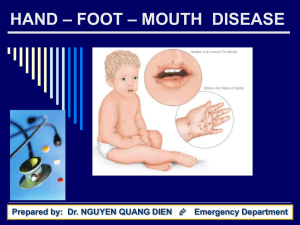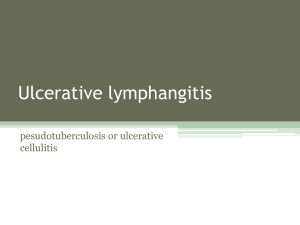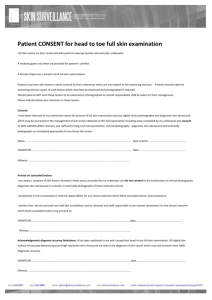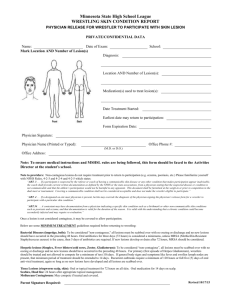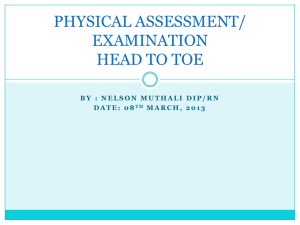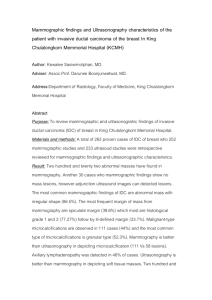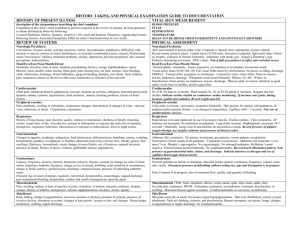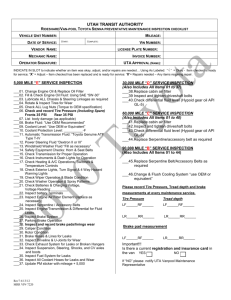Assessment of the Head, Eyes, Ears, Throat and Neck (HEENT)
advertisement
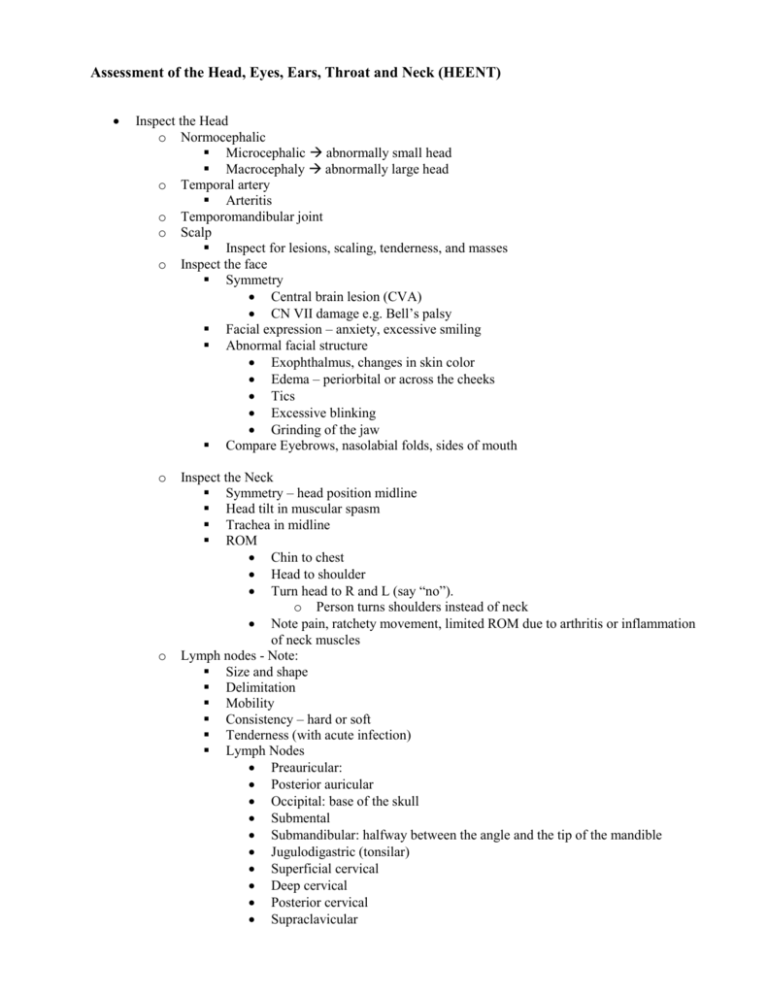
Assessment of the Head, Eyes, Ears, Throat and Neck (HEENT) Inspect the Head o Normocephalic Microcephalic abnormally small head Macrocephaly abnormally large head o Temporal artery Arteritis o Temporomandibular joint o Scalp Inspect for lesions, scaling, tenderness, and masses o Inspect the face Symmetry Central brain lesion (CVA) CN VII damage e.g. Bell’s palsy Facial expression – anxiety, excessive smiling Abnormal facial structure Exophthalmus, changes in skin color Edema – periorbital or across the cheeks Tics Excessive blinking Grinding of the jaw Compare Eyebrows, nasolabial folds, sides of mouth o o Inspect the Neck Symmetry – head position midline Head tilt in muscular spasm Trachea in midline ROM Chin to chest Head to shoulder Turn head to R and L (say “no”). o Person turns shoulders instead of neck Note pain, ratchety movement, limited ROM due to arthritis or inflammation of neck muscles Lymph nodes - Note: Size and shape Delimitation Mobility Consistency – hard or soft Tenderness (with acute infection) Lymph Nodes Preauricular: Posterior auricular Occipital: base of the skull Submental Submandibular: halfway between the angle and the tip of the mandible Jugulodigastric (tonsilar) Superficial cervical Deep cervical Posterior cervical Supraclavicular o Thyroid Gland Goiter Inspect the Eyes o Inspect External Ocular Structures o Facial expression – squinting o Eyebrows Move symmetrically No scaling or lesions o Eyelids/eyelashes Eyelids meet together The palpebral fissure Eyelashes should be evenly distributed Ptosis – drooping of upper lid Skin without redness, discharge or lesions o Eyeballs Exophthalmos (protruding eyes) Enophthalmos (sunken eyes) o Conjunctiva and sclera Conjunctiva - normal color – pink over lower lids, white over sclera Sclera – china white o Assess for drainage, swelling, redness, asymmetry & lesions External & Internal hordeolum (stye) Ectropion Conjuctivitis Arcus Senilis Cataract o PERRLA Contralateral Pupil Constriction Inspect the Ear o Inspection of the Ear o Ears should be equal size Microtia – ears smaller than 4 cm vertically Macrotia – ears larger than 10 cm vertically o Skin intact, same color as face, intact Tenderness Move pinna and push on tragus Assess for lesions, swelling, drainage o Tympanic Membrane Otoscope – just for fun Note any redness, swelling, discharge, foreign bodies The tympanic membrane, or eardrum translucent with a pearly gray color. Ear drum should be flat and intact Inspection of Nose, Mouth and Throat o Eternal nose Symmetric, midline No inflammation Test for patency o Palpate sinuses Over frontal sinuses below eyebrows Over maxillary sinuses below cheekbones o Nose Assess for lesions, swelling, symmetry, discharge o Mouth Assess moisture, lesions, swelling, drainage, teeth and gums Lips – color, moisture, cracking (Cheilitis) or lesions Retract lips and note inner surface o Teeth and gums An adult mouth has 32 teeth Diseased, missing, loose or abnormally positioned teeth Decayed teeth caries Gingival hypertrophy Bleeding gums Tongue Pink and even Dorsal surface rough with papillae Thin white coating Ask pt to touch tongue to roof of mouth o Ventral surface should be smooth, glistening, showing veins Saliva is present Enlarged tongue abnormal o Mental retardation, hypothyroidism, acromegaly Mouth Dry mouth – dehydration Excessive drooling Look for lesions e.g. canker sores, white patches (thrush) (malignancies) Uvula Ask person to say aahh o Soft palate and uvula rise in the midline (CN X) Throat Inspect for lesions Tonsils Acute infection White membrane covering tonsils mononucleosis, leukemia, diphtheria Enlargement; Acute infection, 2+, 3+, or 4+ o 1+ - visible o 2+ halfway between tonsillar pillars o 3+ touching uvula o 4+ touching each other

